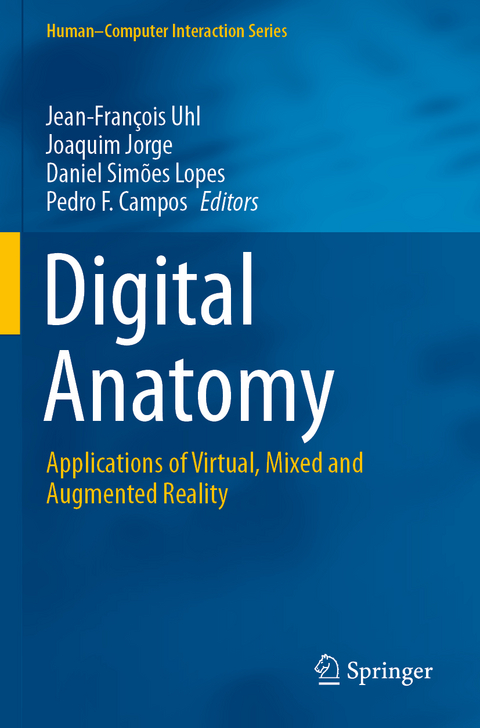
Digital Anatomy
Springer International Publishing (Verlag)
978-3-030-61907-7 (ISBN)
Readers will find relevant tutorials about three-dimensional reconstruction techniques to perform virtual dissections. Several chapters serve as practical manuals for students and trainers in anatomy to refresh or develop their Digital Anatomy skills. We developed this book as a support tool for collaborative efforts around Digital Anatomy, especially in distance learning, international and interdisciplinary contexts. We aim to leverage source material in this book to support new Digital Anatomy courses and syllabi in interdepartmental, interdisciplinary collaborations.
Digital Anatomy - Applications of Virtual, Mixed and Augmented Reality provides a valuable tool to foster cross-disciplinary dialogues between anatomists, surgeons, radiologists, clinicians, computer scientists, course designers, and industry practitioners. It is the result of a multidisciplinary exercise and will undoubtedly catalyze new specialties and collaborative Master and Doctoral level courses world-wide. In this perspective, the UNESCO Chair in digital anatomy was created at the Paris Descartes University in 2015 (www.anatomieunesco.org). It aims to federate the education of anatomy around university partners from all over the world, wishing to use these new 3D modeling techniques of the human body.
Chapter 1. Introduction.- Chapter 2. From anatomical dissection to computerized assisted anatomical dissection.- Part I. Imaging Segmentation & Reconstruction.- Chapter 3. The interest of 3d modeling from anatomical or histological slices for research: Methodology and results of Computer-Assisted Anatomical Dissection (CAAD) method.- Chapter 4. Technique of Volume Rendering from DICOM data (MDCT) applied to the study of Virtual Anatomy.- Chapter 5. 3D vectorial modeling from anatomical slices: building of a 3D Atlas.- Chapter 6. Segmentation software from VRT reconstruction.- Chapter 7. 3D Reconstruction of CT images using Free Software Tools.- Chapter 8. Statistical analysis of organ's shapes and deformations: the Riemannian and the affine settings in computational anatomy.- Part II. Applications.- Chapter 9. Patient Specific Anatomy : the new area of anatomy based on 3D modelling.- Chapter 10. High fidelity 3D anatomical visualization of the fiber bundles of ^ Mixed Reality Virtual Dissection Table.- Chapter 13. The Road to Birth: Using Extended Reality to visualize pregnancy anatomy.- Chapter 14. Innovations in Microscopic Neurosurgery.- Chapter 15. Cataracts, VR and Digital Anatomy.- Part III. Education.- Chapter 16. VR Simulation for Radiation Therapy Education.- Chapter 17. Towards Constructivist Approach Using Virtual Reality in Anatomy Education.- Chapter 18. InNervate AR: Mobile Augmented Reality for Studying Motor Nerve Deficits in Anatomy Education.- Chapter 19. Virtual and augmented reality for educational anatomy.
| Erscheinungsdatum | 17.05.2022 |
|---|---|
| Reihe/Serie | Human–Computer Interaction Series |
| Zusatzinfo | XIV, 385 p. 218 illus., 202 illus. in color. |
| Verlagsort | Cham |
| Sprache | englisch |
| Maße | 155 x 235 mm |
| Gewicht | 611 g |
| Themenwelt | Mathematik / Informatik ► Informatik ► Betriebssysteme / Server |
| Informatik ► Software Entwicklung ► User Interfaces (HCI) | |
| Schlagworte | computational anatomy • Digital Anatomy • Medical Application of Extended Reality • Surgical Planning • surgical training • VR/AR/MR for Diagnosis |
| ISBN-10 | 3-030-61907-9 / 3030619079 |
| ISBN-13 | 978-3-030-61907-7 / 9783030619077 |
| Zustand | Neuware |
| Haben Sie eine Frage zum Produkt? |
aus dem Bereich


